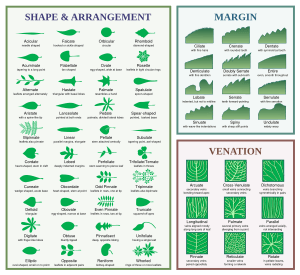Identification of trees of the northeastern United States facts for kids
Have you ever wondered what kind of tree you're looking at? This guide will help you identify many common trees! It's based on a book called Our Native Trees and How to Identify Them by Harriet L. Keeler. This guide focuses on flowering trees that grow naturally in a large area of North America. This area stretches from the Atlantic Ocean to the Rocky Mountains, and from Canada down to the northern parts of the southern United States. It also includes a few well-known trees that came from other countries but now grow wild here. This guide doesn't include pine trees or other cone-bearing trees, and it's not a complete list of every tree in the region.
How to Use This Tree Identification Guide
To figure out what kind of tree you've found, you'll need to look closely at its features. The best way to identify a tree is by examining its leaves. Make sure to pick leaves from a mature tree, not a young one. If a leaf looks like it's made of smaller parts, it's called a compound leaf. You can tell these smaller parts (leaflets) from simple leaves because leaflets don't have tiny leaf buds at the base of their stems.
To identify your tree, start by checking the main characteristics listed below. If your tree has that feature, then move to the next indented level to find more specific details. For example, if your tree has simple leaves, then you'll look to see if the leaves alternate along stem or if the leaves are opposite along stem.
- Simple leaves
- Leaves alternate along stem
- Margins entire (smooth edges)
- Oblong-ovate or obovate, large, thick: magnolia
- Oblong, stays green in the south: sweetbay magnolia
- Evergreen (stays green all year): rhododendron, kalmia
- Obovate, 15-30 cm long: pawpaw
- Oblong, thick, shiny, 5-12 cm long: black tupelo
- Oblong, found rarely in the north: American persimmon
- Heart-shaped: eastern redbud
- Leaves of three forms; oval, two-lobed, or three-lobed; often all three on one branch: sassafras
- Thick, shiny, willow-shaped: shingle oak, willow oak
- Thick, shiny, ovate, spines where leaves meet stem: Osage-orange
- Broadly oval or obovate, veins stand out, leaves usually in bunches at branch ends: pagoda dogwood
- Margins slightly indented (not smooth)
- Obliquely heart-shaped (uneven at base): linden
- Obliquely oval (uneven at base): elm
- Obliquely ovate (uneven at base): hackberry
- Oval or ovate, doubly serrate (saw-toothed twice): birch (see Betula classification), American hornbeam
- Repand with spiny teeth (wavy with sharp points): American holly
- Coarsely-toothed, twigs have thorns: black locust
- Quivering habit, leaf stems are flat: poplar
- Long, slender, finely serrate (tiny saw-teeth): willow
- Coarsely crenately-toothed (rounded teeth): chestnut oak
- Obovate or oval; wavy-toothed: witch-hazel
- Serrate (saw-toothed): plum, cherry, crabapple, sourwood, juneberry, silverbell, beech
- Margins lobed (deeply cut)
- Lobes entire (smooth edges on the lobes)
- Margins entire (smooth edges)
- Leaves alternate along stem
* Apex truncate (flat top), three-lobed: tulip tree * Lobes and sinuses (spaces between lobes) rounded: white oak * Lobes rounded, 2 or 3 lobes: sassafras * Lobed or coarsely toothed, underside covered with white fuzz: white poplar
-
-
-
- Lobes slightly indented (not smooth on the lobes)
-
-
* Five-lobed, finely serrate (tiny saw-teeth): American sweetgum * Variously lobed, irregularly toothed: mulberry
-
-
-
- Lobes coarsely toothed (large teeth on the lobes)
-
-
* Irregularly toothed, lobes have bristle points: northern red oak * Leaf broad, lobes coarsely toothed: American sycamore
-
- Leaves are opposite along stem (grow directly across from each other)
- Margins entire (smooth edges)
- Ovate, veins stand out: flowering dogwood
- Heart-shaped, large: catalpa
- Oval: fringe tree
- Margins serrate (saw-toothed): sweet viburnum, black haw viburnum
- Margins lobed (deeply cut): maple
- Margins entire (smooth edges)
- Leaves are opposite along stem (grow directly across from each other)
- Compound leaves (made of smaller leaflets)
- Leaves pinnately compound (leaflets arranged along a central stem like a feather)
- Alternate (compound leaves grow alternately along the branch)
- Margin of leaflets entire (smooth edges)
- Alternate (compound leaves grow alternately along the branch)
- Leaves pinnately compound (leaflets arranged along a central stem like a feather)
* Leaflets oval, apex obtuse (blunt tip): black locust * Leaflets oblong, apex acute (pointed tip): poison sumac * Leaflets oval or ovate: yellowwood (Cladrastis kentukea) * Leaflets ovate — three in number: hoptree (Ptelea trifoliata)
-
-
-
- Margin of leaflets with two or three teeth at base: tree of heaven
- Margin of leaflets serrate (saw-toothed): sumac, rowan, walnut, hickory
- Opposite (compound leaves grow directly across from each other)
- Margin of leaflets entire (smooth edges): ash
- Margin of leaflets serrate (saw-toothed): ash
- Margin of leaflets coarsely toothed (large teeth): boxelder maple
-
- Leaves bi-pinnately compound (leaflets are on stems that branch off a main stem, like a double feather)
- Margins of leaflets entire (smooth edges): Kentucky coffeetree
- Irregularly bi-pinnate, margins of leaflets entire, thorns on stems above the leaf bases: honey locust
- Margins of leaflets serrate (saw-toothed), stems spiny: prickly ash
- Leaves palmately compound (leaflets spread out from a central point like fingers on a hand): Ohio buckeye, common horse-chestnut
-


